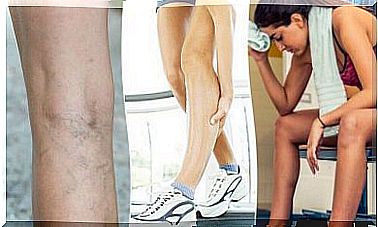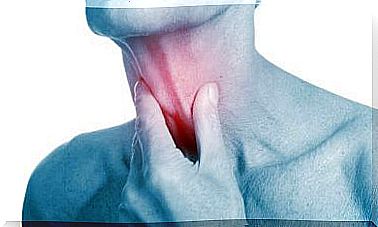What Causes Posterior Cruciate Ligament Injury?
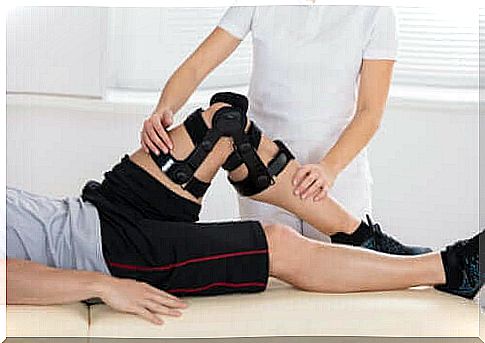
The posterior cruciate ligament is the strongest ligament in the knee joint. Injuries to the posterior cruciate ligament are less common than those to the anterior cruciate ligament. The latter is considered the most vulnerable.
It is called the posterior or posterior cruciate ligament because it runs over the back of the knee. It connects the tibia to the femur and, together with the anterior cruciate ligament, maintains the stability of the joint. Both cruciate ligaments run inward and form an X in the center of the joint.
But what if you get a posterior cruciate ligament injury? There is usually less pain and instability than an anterior cruciate ligament injury, but limitations can last for several weeks or months. In this article we provide more information.
Symptoms of posterior cruciate ligament injury
Most people with a posterior cruciate ligament injury immediately feel pain and then develop swelling. The feeling they describe is that the knee feels weak and loose, as if it suddenly can no longer support their weight.
The pain can be severe and appear along with difficulty walking, so there may be a limp. However, it’s also important to note that posterior cruciate ligament symptoms can be so mild that you may not even notice them.
Eventually, pain begins to develop or the knee begins to feel unstable. It is at this point that a person often seeks medical help and finds out that he has suffered an injury some time ago.
Degree of injury
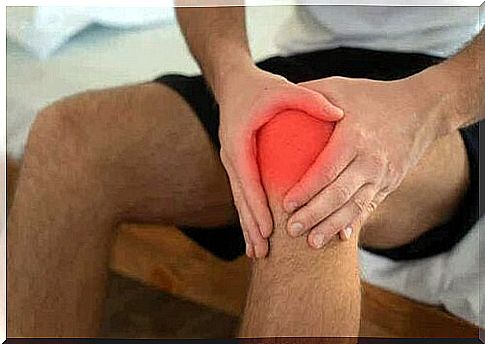
The classification of posterior cruciate ligament injuries depends on the magnitude of the displacement of the bones in the knee joint. The degrees of posterior cruciate ligament injury (Spanish link) are classified as follows:
- First degree or partial. This concerns a backward displacement of the tibia of 1 to 5 millimeters.
- Second degree or full. In this case, the posterior displacement of the tibia is 6 to 10 millimeters.
- Third degree. The posterior displacement of the tibia is greater than 10 millimeters. It indicates that there is a lesion of the posterior cruciate ligament and also of the anterior cruciate ligament.
Main causes of posterior cruciate ligament injury
Many knee injuries occur during sports. Injuries to the posterior cruciate ligament usually occur as a result of a car accident. It occurs when a person just masters a blow or blow or when their own weight hits the bent joint. Other common mechanisms that cause injury to this ligament include:
- When the knee moves back very quickly due to being hit.
- The shin bone hits very hard against something solid, such as the dashboard of the car.
- The knee suddenly twists or overextends.
What is the diagnosis of a posterior cruciate ligament injury?
To perform the initial assessment, the doctor will ask how the injury occurred. He or she will then look at both knees to determine if one looks different from the other. If it is indeed the posterior cruciate ligament, the knee will tilt backwards in an incorrect anatomical way when you straighten your leg.
Another examination to determine if there is posterior cruciate ligament pressure is to apply pressure to the shin bone with the knee bent at a 90-degree angle. If the shin moves more than usual, it is very likely that the posterior cruciate ligament has been damaged.
When the situation requires it, the doctor may order one or more of the following imaging studies to image the posterior cruciate ligament:
- X-rays. While it is not possible to detect whether there is damage to the ligament, it does reveal whether there are fractures of the involved bones as well.
- Magnetic resonance imaging (MRI). With this technique it is possible to see if there is a tear in the posterior cruciate ligament and if the other soft parts of the knee are damaged.
- arthroscopy. This examination allows specialists to view the inside of the knee. They insert a small video camera into the joint and analyze the structures of the knee joint.
Available treatments for posterior cruciate ligament injuries
Treatment for this problem depends on the extent of the injury and the time that has passed since it happened. This can be non-surgical or surgical.
Non-surgical
In the case of a minor injury, it is possible to start the treatment without surgery. For example, by applying cold therapy and raising the knee while sitting. An elastic bandage or compression bandage is also used to prevent swelling and limit range of motion.
Over-the-counter pain relievers, such as ibuprofen or acetaminophen, can help relieve the pain. These drugs also help to reduce swelling. When using painkillers, it is important to respect the maximum dosage.
Surgical Treatment
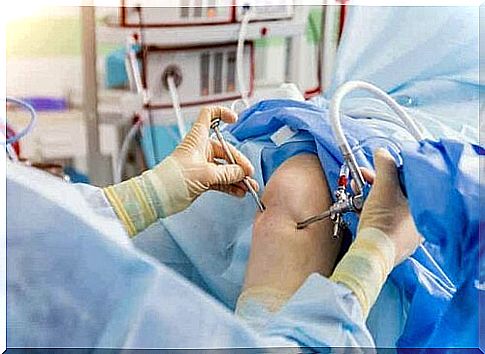
Most people do not need surgery to recover from posterior cruciate ligament problems. This is usually necessary for top athletes. When repairing a posterior cruciate ligament, it does not need to be reattached to the bone. This does not grow well and can tear again if there is pressure on the posterior cruciate ligament.
For this reason, the doctor removes the torn ligament and replaces it with new tissue. This procedure is performed arthroscopically for faster recovery. It also results in less scarring.
Recovery and Outlook
Physical therapy can help through specific exercises that strengthen the leg muscles. The aim is to restore the full range of motion of the knee joint.
Physical therapy should begin 1 to 4 weeks after surgery. The duration of this treatment may require a period of 6 months before the complaints are completely resolved.
Injuries involving multiple ligaments tend to heal more slowly. Most patients recover satisfactorily with the passage of time. Although it is a slow process, physical therapy is very important to be able to perform all daily activities again.
A treatment plan for posterior cruciate ligament injury
Once a posterior cruciate ligament problem is diagnosed, a treatment plan is essential. The time it takes for recovery depends on the severity and the number of structures involved.
Some people may benefit from using crutches for the first few days after surgery. An orthopedic brace may also be recommended to prevent bending of the knee.
Full recovery from posterior cruciate ligament reconstruction takes up to a year. It is very important to emphasize that most people will be able to resume their activities that they were doing before the injury.
